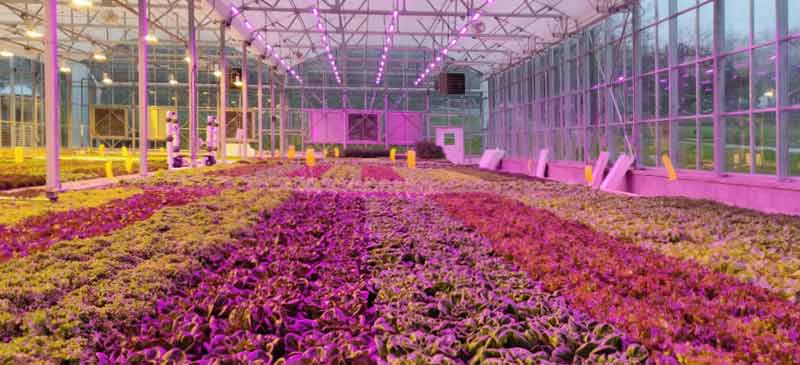
Light is one of the most important factors growing any crop. But, how can you be sure that your plants are receiving enough light? There is a way to measure the light intensity received by your plants.
Light occupies a large portion of the electromagnetic spectrum. But just a fraction of the spectrum is utilized by plants for photosynthesis. The wavelengths of the light spectrum from 400 nm to 700 nm are called photosynthetically active radiation (PAR). PAR can be measured in μmol m-2 s-1 and is referred to as photosynthetic photon flux density (PPFD). PAR provides the amount of light photons that plants receive per area in a fraction of one second. This measurement can be monitored by a photosynthetically active radiation sensor.
Daily light integral (DLI) is used to understand and evaluate the quantity of light plants are receiving. DLI is a cumulative version of PAR which measures the quantity of light received by plants per area per day (mol m-2 d-1).
Many studies have been done evaluating crop performance under different DLI levels. This information allows growers to determine if light levels in their greenhouses or indoor farms are high enough to ensure good crop production. DLI is calculated using PPFD and photoperiod (hours of light) in the formula:

Based on recent studies the recommended DLI for common greenhouse and indoor farm crops are:
| Crop | Minimum DLI | Optimum DLI |
| (mol/ m2/ day) | (mol/ m2/ day) | |
| Lettuce | 12 | 17 |
| Microgreens | 12 | – |
| Strawberry | 17 | 20 |
| Sweet Pepper | 20 | 30 |
| Cucumber | 15 | 30 |
| Tomato | 20 | 30 |
Data from research done by Dr. Neil Mattson, Director of Cornell University Controlled Environment Agriculture group.
More light does not always translate to better production. Fruiting crops require at least four to six hours of darkness or physiological disorders including chlorosis, reduced plant size and yield can occur. Also, studies at Cornell University found that a continuous DLI greater than 17 mol m-2d-1 (more than three consecutive days) can cause tipburn in lettuce.
Units:
PPFD=mol m-2 s-1
Photoperiod (h)
DLI=mol m-2 d-1
Now you can understand how important light quantity is to crop production. Hort Americas cares about your crops and offers a variety of lighting fixtures and light sensors, including ones to monitor PPFD and DLI. The staff at Hort Americas can assist you to ensure the best light conditions are provided for the crops you are producing.
Now you can understand how important light quantity can be in your production! At Hort Americas we care about your crop and offer you a variety of sensors to monitor PPFD and DLI. We will be happy to assist you in finding the best light conditions and products to be successful in your project!





You must be logged in to post a comment.